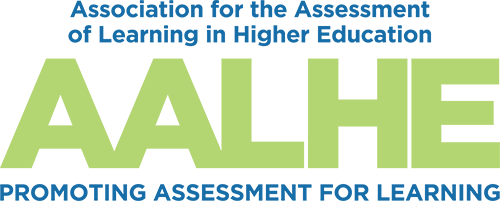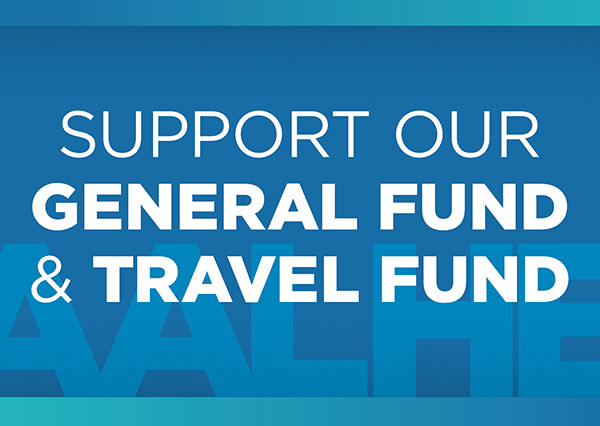- Home
- About AALHE
- Board of Directors
- Committees
- Guiding Documents
- Legal Information
- Organizational Chart
- Our Institutional Partners
- Membership Benefits
- Member Spotlight
- Contact Us
- Member Home
- Symposium
- Annual Conference
- Resources
- Publications
- Donate
EMERGING DIALOGUES IN ASSESSMENTCredit for Prior Learning Portfolios: Challenges of Assessing Unique Learning Experiences
September 24, 2025
AbstractAdult and contemporary learners often bring rich professional and experiential backgrounds to their college studies that traditional Prior Learning Assessment (PLA) methods may not capture. This article addresses current PLA assessment and discusses some of the ways in which assessment might be broadened in a way to recognize these prior learning experiences.
Working to recognize a student’s prior learning experiences can help create a more personalized educational experience. If previously learned skills and life experiences can be recognized, students may avoid coursework that is redundant and progress through their programs more efficiently. Additionally, both the learning institution and the student can save time and other resources by formally recognizing the prior experiences. This recognition of prior learning can even help motivate students by making them feel that their experiences are valued and not wasted. Faculty regularly assess student learning at the same time the student is enrolled in a course. Papers, quizzes, tests, presentations, and discussions are routinely used to assess where students are in the learning process. These methods are effective for assessing student learning as it occurs. In addition, there are already numerous ways for students to request credit for prior learning, also referred to as prior learning assessment. Some methods of awarding credit are widely used such as College Level Examination Program (CLEP), Advanced Placement (AP), International Baccalaureate (IB), and military service credit using American Council on Education (ACE) recommendations. In an evolving world, contemporary learners may begin to question how their experiences from prior employment are not able to qualify as college-level learning. Colvin (2012) explained that learning experiences from outside the classroom can have value, and some of these experiences may be considered for college credit. Additionally, the development of a learning portfolio can help promote the use of formative assessment and help involve students in the process of assessment (Holtzman & Dagavarian, 2007). Such a portfolio can be used to explain and demonstrate how prior experiences contribute to learning. However, evaluating prior learning experiences, especially through portfolios, presents unique challenges. The use of learning portfolios is one way of awarding credit for prior learning, but assessing the portfolio may change substantially with each student based on the uniqueness of their experiences. While organizations such as the Council for Adult and Experiential Learning (CAEL) provide rubric examples in their portfolio evaluation training, it can be challenging to apply a single rubric across a varied and diverse range of students and experiences. When a student is working to receive credit for a specific course requirement in an academic program, there are likely clear and measurable learning outcomes for that course. These learning outcomes allow for an appropriate assessment of the work completed in the course. Yet remaining issues exist for students who may be seeking credit in areas related to their studies, but not directly associated with an existing course. The challenge of assessing students’ prior learning experiences may be more common in programs that have greater adult and contemporary learner enrollment. One challenge for such programs is enabling proper recognition of these prior learning experiences. Each student brings a background and experiences that are unique, yet many of these experiences may be related to topics taught in the program. Lakin and Clark (2002) explained that meaningful assessment of experiential learning can be a difficult process, and the learning students have done outside of the classroom may not always have the same type of objectives as a traditional course. Also, the use of a learning portfolio can allow students to demonstrate competency in areas of a program where classes dealing with specific topics are not offered, but an award of elective credit could be appropriate (Lakin & Clark). One of the unique issues when addressing awards of credit for prior learning is the actual assessment of the learning from a student’s experiences. Additionally, getting faculty to embrace an award of credit from experiences outside of the classroom can be challenging – particularly for learning experiences that may not be directly connected to courses that are offered in a program. Students use their experiences to demonstrate how they achieved learning outcomes in the case of courses that are offered in the program, and the assessment is generally a straightforward process; this is more complicated without defined learning outcomes to use for evaluation. When there are no courses that connect to the experiences of a student, assessment becomes more challenging. There may be a link to an overall program area, but there is not a specific course available that deals with the student’s outside learning experience. Returning to the idea presented by Lakin and Clark (2002), an award of elective credit will likely become the most appropriate option in these cases. This creates a situation where there will probably not be existing assessments or objectives available to evaluate student learning. In the development of a learning portfolio students will be asked to build a learning narrative that relates to their prior experiences. This narrative provides a historical perspective of the experiences a student has, along with a glimpse into learning that might have taken place. As the portfolio is further developed, learning objectives are identified as they can be used to demonstrate competency in a specific area. Finally, students provide artifacts that help corroborate the learning experience they are discussing in the portfolio. These artifacts might include items such as emails from supervisors at a job, certificates received as part of professional training, or even photographs showing completed projects. Once the portfolio is developed, the contents are reviewed to determine if and how much credit should be awarded for prior learning. This point is where making an appropriate assessment of the portfolio becomes more complicated. It is important to consider that there needs to be academic rigor demonstrated in the contents of the portfolio. When a student is seeking credit for a course, such as Rhetoric and Composition, it is not difficult to find academic standards for comparison; but when credit is being awarded in an area not associated with an existing course, assessing the portfolio is not as clear. Creating a specific assessment framework for these situations can be challenging, as the experiences of each student are not likely to be the same. For this reason, a more broad-based approach may be needed to thoroughly assess the portfolio. To assess a learning portfolio, evaluators must consider the presence of a learning experience as demonstrated through a) achieving measurable learning objectives, b) a clear connection to appropriate theoretical constructs, c) demonstrated communication of experiences and how they have been applied in practice, and d) the inclusion of evidence of the learning experience using artifacts. Additionally, it is important to evaluate the relevance of the learning experiences to current standards. For example, some fields have professional standards or essential skills that must all be addressed. While the use of learning portfolios is common, the challenges involved in assessing them can be unique. Assessment of these portfolios has the risk of being subjective or lacking rigor. There are also cases where there are no existing assessments to compare the depth and quality of learning in the student's prior experience. When combined, these factors create a unique set of challenges that deserve further conversation to help determine the best practices of assessing portfolios based on students’ past unique experiences. For example, a student with substantial experience in the fast food industry had developed expertise in employee scheduling and training. Additionally, they had completed several professional development courses focused on food safety and leadership skill development. While there were no programs in the course catalog that were suitable for assessing the learning that took place throughout the student’s fast food operations experience, the experiences could be assessed as a special topics course within the leadership curriculum by drawing clear connections between leadership theories and the student’s experiences. While institutions work to evolve to meet the needs of students, recognizing prior learning is an opportunity to create meaningful academic experiences for students. There are still challenges in terms of developing comprehensive assessment frameworks, the potential benefits are substantial. Embracing flexible approaches when evaluating the diverse experiences of students is one way to validate and support the efforts of adult and contemporary learners, helping to connect experiences to academic credit. Additional discussions will drive the ways assessment of these experiences can be refined, while also recognizing the learning that can take place outside of a traditional classroom. ReferencesColvin, J. (2012). Earn college credit for what you know. Council for Adult & Experiential Learning ; Kendall/Hunt Pub. Co. Holtzman, D., & Dagavarian, D. A. (2007). Prior learning assessment: The use of electronic portfolios in assessing student learning outcomes. The Journal of Continuing Higher Education, 55(1), 65–69. Lakin, M. B. & Clark, L. C. (2002). Prior learning assessment corner: Considerations for the faculty assessor: The process of assessing the portfolio, The Journal of Continuing Higher Education, 50(3), 55–58. |

